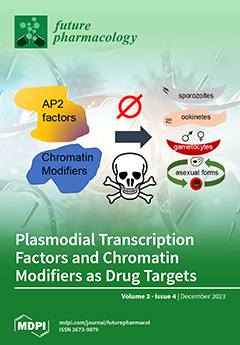While it is true that pharmacotherapy has achieved desired health outcomes, significant unmet medical needs persist in the field of central nervous system (CNS) drugs, particularly for neurodegenerative diseases such as Alzheimer’s disease, as well as ocular diseases such as diabetic retinopathy and
[...] Read more.
While it is true that pharmacotherapy has achieved desired health outcomes, significant unmet medical needs persist in the field of central nervous system (CNS) drugs, particularly for neurodegenerative diseases such as Alzheimer’s disease, as well as ocular diseases such as diabetic retinopathy and age-related macular degeneration. Drugs cannot enter the brain from the bloodstream due to the presence of the blood–brain barrier (BBB). Similarly, they cannot enter the eyes from the bloodstream due to the blood–retina barrier (BRB), which is composed of the endothelium or the epithelium. Thus, innovative drug delivery systems that can overcome these barriers based on efflux transporters, hydrophobic lipid bilayer membranes, and tight junctions should be developed using patient-friendly techniques distinct from craniotomy procedures or intravitreal injections. Brain-penetrating CNS drugs and antihistamine drugs commonly share
N-containing groups. These findings suggest that certain types of cation transporters are involved in their transportation across the cell membrane. Indeed, the proton-coupled organic cation (H
+/OC) antiporter, whose specific characteristics remain unidentified, is responsible for transporting compounds with
N-containing groups, such as clonidine and pyrilamine, at the BBB, and likely at the BRB as well. Therefore, well-designed low-molecular-weight drugs containing
N-containing groups as transporter recognition units can enter the brain or the eyes through carrier-mediated transport. In this perspective review, I introduce the implementation and potential of H
+/OC antiporter-mediated transport across the endothelium at the BBB or the BRB using drugs consciously designed with
N-containing groups as their substrates.
Full article



